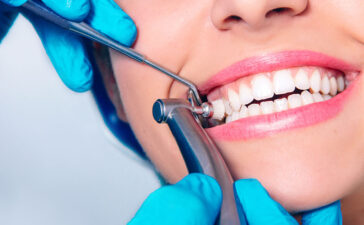Your gums play a vital role in maintaining your oral health and integrity. These tissues surround your teeth and help anchor them firmly. Any infection or inflammation can compromise the oral form, function, and aesthetics. And among all the forms of gum disease, gum recession can be debilitating.
According to the dentist in Rancho San Diego, gum Recession can be treated appropriately if diagnosed early. Read on to explore more about this condition and the effective treatment modalities.
A comprehensive guide to gum recession
Gum disease is a severe form of infection affecting the gums and is characterized by the pulling away of supporting tissues from your teeth. This leads to an abnormal exposure of the tooth roots. This results in an increased tooth sensitivity to hot and cold things. Gum recession can be classified as mild, moderate, or severe depending on the severity of the condition.
Etiology
- Brushing too hard or too aggressively
- Using a hard-bristled toothbrush
- Plaque or calculus buildup
- Periodontal disease
- Trauma or injury to the gums
- Misalignment
- Tobacco use
- Smoking
- Lip or tongue-piercing
Symptoms
The most striking sign of receding gums is the exposure of the tooth roots. Other signs and symptoms may include:
- Gnawing pain near the gum line
- Increased tooth sensitivity to heat, cold, and sweets
- Sensitivity when brushing or flossing teeth
- Sensitivity during dental cleanings
- Halitosis (bad breath)
- Aesthetically unappealing smile
- Loose teeth
Diagnosis
Gum recession can be easily diagnosed during a routine oral examination. A periodontal probe is a special dental instrument that can help measure the amount of gum recession on each tooth. The probe can also help measure the depth of the periodontal pockets to assess the amount of bone loss.
Treatment
Gum recession treatment depends on the severity of the condition. The treatment options are as follows:
Mild to moderate gum recession
- Topical or oral antibiotics
- Scaling and root planing
- Dental bonding to camouflage the area of recession with tooth-colored composite resin.
- Orthodontic treatment like braces for crooked or rotated teeth causing gum recession.
Severe gum recession
- Severe gum recession is usually treated through surgical intervention such as gum grafting. During the surgery, a graft is taken from other places of your oral cavity and used to replace your missing gum tissue.
Conclusion
Gum recession is a common form of gum disease. Early detection can be treated successfully and halt the disease progression. Left untreated, gum recession can wreak havoc on your oral health. Know the warning signs to stay alert and seek dental care immediately to improve your overall quality of life.









